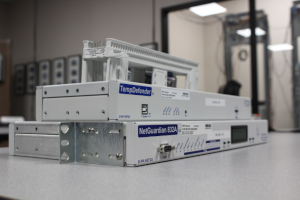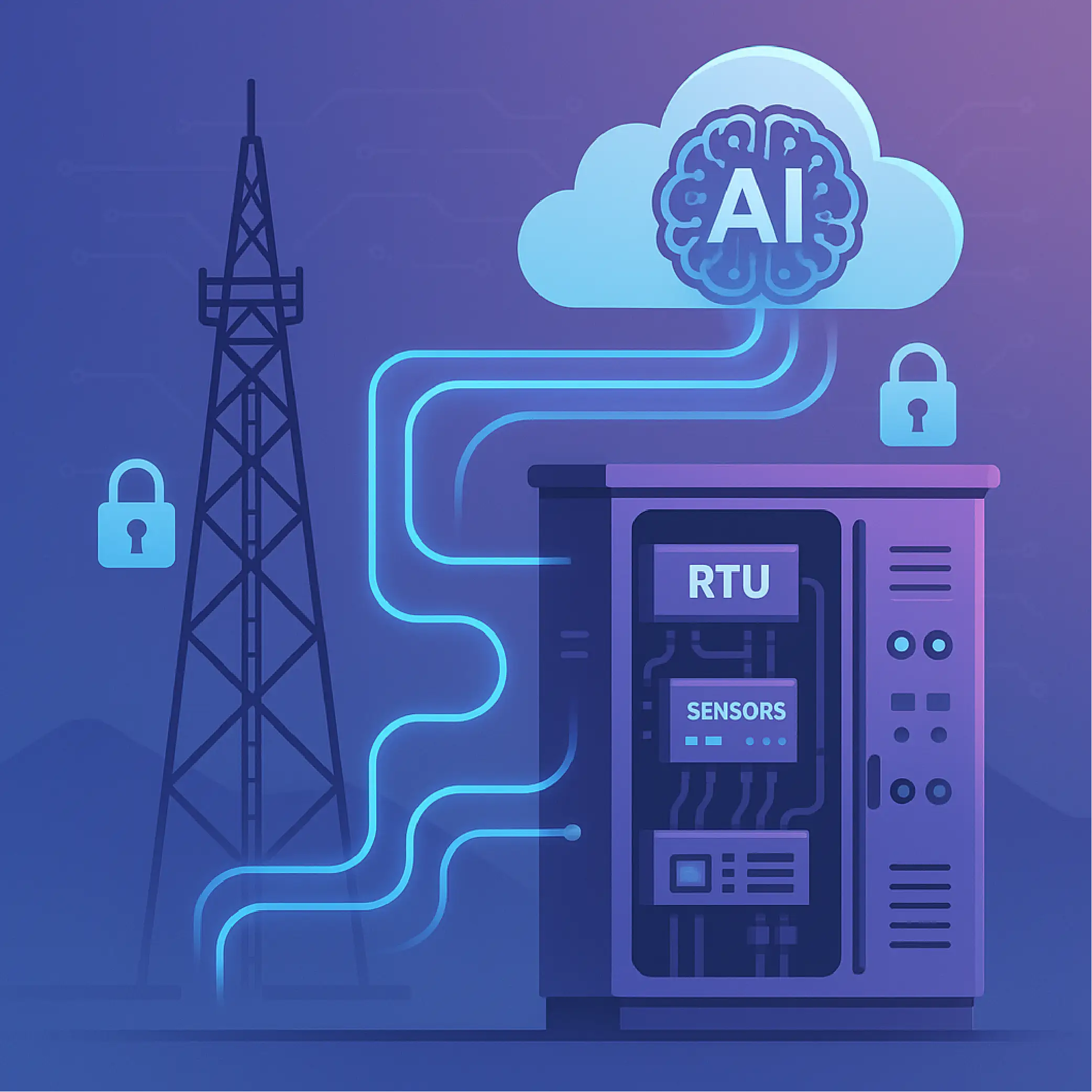Check out our White Paper Series!
A complete library of helpful advice and survival guides for every aspect of system monitoring and control.
1-800-693-0351
Have a specific question? Ask our team of expert engineers and get a specific answer!
Sign up for the next DPS Factory Training!

Whether you're new to our equipment or you've used it for years, DPS factory training is the best way to get more from your monitoring.
Reserve Your Seat TodayArtificial intelligence is here - and it's growing. AI and machine learning (ML) have transformed what's possible just about everywhere.
Predictive analytics, anomaly detection, and real-time automation are helping organizations strengthen operations, reduce costs, and make smarter decisions. But for IT professionals who manage physical infrastructure - especially at remote sites - this wave of innovation raises some big questions:
If you're working with aging infrastructure, legacy alarm systems, or disconnected tools, the answer is likely: not yet.
But that's okay. You don't need to rip and replace everything. You just need to upgrade the right pieces to support your AI strategy. You need to do it without introducing complexity, risk, or new compatibility issues.
Let's break down how to do so. We'll look at the points highlighted in IoT For All's article on optimizing IT infrastructure in the age of AI.

We're not talking about hypotheticals anymore. The benefits of AI are real, and they're already delivering results:
But there's a catch: AI doesn't work in a vacuum.
If your infrastructure isn't giving you real-time visibility, clean data, or reliable control, your fancy new AI models won't work as promised. They'll be making decisions based on outdated inputs. Even worse, they could be deciding based on no data at all.
This is especially important for organizations managing telecom networks, utility substations, transportation systems, and government facilities. At these mission-critical sites, bad data can have real-world consequences like lost revenue, service outages, or even public safety risks.
Most IT infrastructure wasn't built with AI in mind. If you've got remote locations, there are five common issues that can stall - or completely derail - your AI plans:
AI thrives on up-to-the-minute information. However, many remote sites rely on old gear that only provides basic SNMP v1 traps. Even worse, some gear doesn't send alerts at all unless something fails catastrophically.
If your HVAC units, rectifiers, or generators don't support standard protocols like SNMPv3 or MODBUS, your AI tools can't talk to them (or even make decisions and predictions based on their statuses). That leaves big blind spots in your data landscape.
AI is great at recommending actions, but if your infrastructure can't execute them remotely (like switching HVAC roles or toggling equipment), you're still stuck sending someone to the site. That wastes your time and your budget money.
When older gear connects to cloud-based AI platforms without proper encryption or access control, you increase your attack surface. That's a big risk if you're subject to NERC CIP, HIPAA, or other compliance standards.
If your alarm responses, device configurations, or site checks still require human intervention, you won't get full value from your AI investment. Manual processes are bottlenecks, and AI can't fix that on its own.
So, how do you solve these problems without ripping out everything and starting over?
Before we talk about specific products, let's define what success looks like. A remote site that's truly ready for AI should have:
Your RTUs (remote telemetry units) should collect and report alarms, analog readings (voltage, current, temp, humidity), and device states in real time. It's even better when you have local logic that supports automation and alarm filtering.
You need support for secure, modern standards like SNMPv3, HTTPS, and MODBUS/TCP. This makes your site compatible with today's AI platforms and tomorrow's upgrades.
The best sites don't just gather data, they also process it locally. This allows for fast, autonomous responses to environmental changes or device anomalies.
You don't want to swap out hardware every time you add a sensor. Your infrastructure should grow with your needs, not limit them.
Your team should be able to view status, control devices, and update settings from anywhere (without compromising security).
When you have all of this in place, integrating AI becomes much easier. Instead of working around infrastructure limitations, your AI systems can plug in and start delivering real value the way they were intended.
This is exactly why we design our products the way we do. At DPS Telecom, we've spent more than 30 years helping organizations monitor and manage remote sites. And we've learned one thing: no two sites are alike (no matter how much "standardization" is attempted).
You might have legacy gear in one cabinet, modern sensors in another, and a wide mix of HVAC controllers, UPS systems, and generators across your network. Our job is to help you unify all of it and prepare for the future.
With the right gear, you can harness AI to unlock major gains such as faster responses, smarter maintenance, and lower costs. But AI is only as powerful as the data it receives. That's why having dependable, real-time infrastructure monitoring is critical.
DPS devices bridge that gap by feeding your AI systems with clean, structured, and timely data. This enables functions like automation, predictive analytics, and better decision-making across your network.
Our NetGuardian family of RTUs gives you the visibility and control you need, no matter how complex your site is.
Popular models include:
All G6 NetGuardians offer:
You'll be able to collect the clean, timestamped data your AI systems need - right from the edge.
Want to reduce your carbon footprint and make your sites AI-ready? Start with your HVAC systems.
Our G6 HVAC Controller gives you precise environmental control with built-in intelligence. It supports:
You can program logic to automatically switch HVAC units and alert you when performance drops.
Pair this with your AI analytics platform. You'll get predictive maintenance and smarter energy use across your network.
AI tools don't always play nice with legacy gear. But instead of replacing every device, you can use DPS protocol mediation to convert and normalize data.
For example:
These solutions make your entire infrastructure AI-compatible without blowing your budget on replacements.
Let's say you manage 75 remote sites, each with a mix of legacy telecom equipment, newer sensors, and basic SNMP-capable gear. Your goal is to integrate an AI platform to predict equipment failures, reduce power consumption, and automate maintenance scheduling.
Here's what we'd recommend:
Now your AI tools have access to real-time, reliable data - and your sites can respond to events right away.
AI is not optional anymore. It's becoming a core part of IT operations - and your infrastructure needs to support it.
Here's the good news: you don't need to do it all at once. You just need to start with the right upgrades that build a solid foundation for automation, efficiency, and scalability.
At DPS, we're here to help you do exactly that. Whether you need 2 sites upgraded or 200, we'll help you build a roadmap that balances cost, compatibility, and capability.
If you're responsible for IT infrastructure at remote sites - and you're exploring how AI can help - you don't have to figure it out alone.
We've helped telcos, utilities, railroads, and government agencies modernize their monitoring systems without sacrificing reliability or blowing their budgets.
Let's have a quick online meeting. I'll walk you through the right gear, share real-world examples, and help you make smart, future-ready decisions.
Call me at 559-454-1600
Or email: sales@dpstele.com

Andrew Erickson
Andrew Erickson is an Application Engineer at DPS Telecom, a manufacturer of semi-custom remote alarm monitoring systems based in Fresno, California. Andrew brings more than 19 years of experience building site monitoring solutions, developing intuitive user interfaces and documentation, and opt...